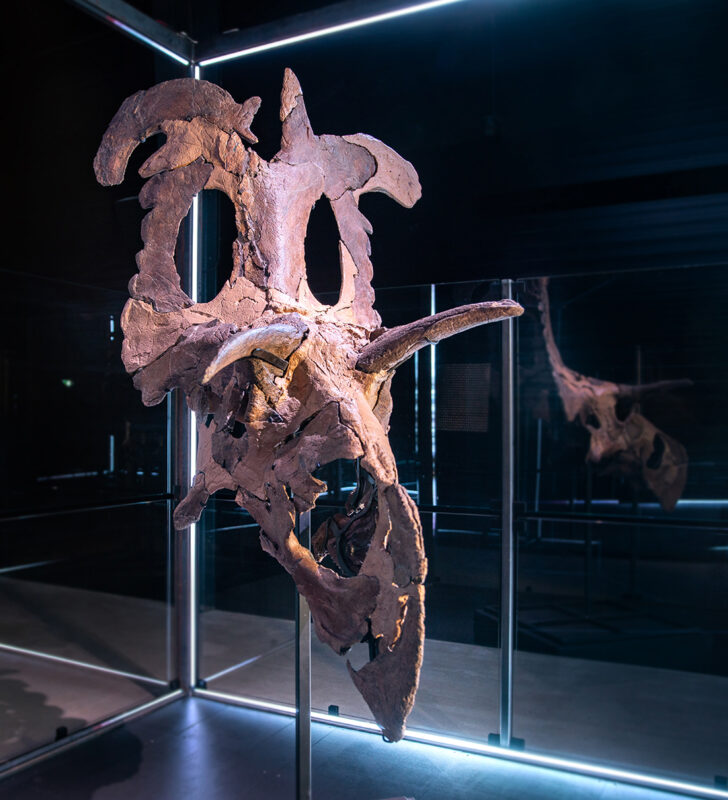Though these fossils have been made aware of since 2019, it was only as of June, 2024, that they finally gave a the horned dinosaur a name, leading to many revelations about the history of horned dinosaurs.
The dinosaur bones were found by Mark Eatman in spring 2019 on a Montana Ranch, in the Kennedy Coulee region, only miles from the U.S. – Canadian border. The dinosaur is estimated to be 22 feet long and 11,000 pounds heavy. The dinosaur lived 78 million years ago, during the Late Cretaceous period, says Smithsonian Magazine.
In 2021, the dinosaur bones were bought by Denmark’s Museum of Evolution and taken to the Utah-based fossil preparation and mounting company, Fossilogic. It is there that Study author and paleontologist, Brock Sisson, along with fellow study author and CSU affiliate faculty member, Joseph Sertich, and technician, Ben Meredith, used casts of the real bones to reconstruct the skull of the Lokiceratops. “This new dinosaur pushes the envelope on bizarre ceratopsian headgear, sporting the largest frill horns ever seen in a ceratopsian”, says Sertich. Denmark’s Museum of Evolution had the skeleton mounted in 2022, where it is now on display.
The Lokiceratops was named by Joseph Sertich and University of Utah Professor, Mark Loewen. Its full name is Lokiceratops rangiformis. It was named after the Norse god, Loki, and was announced to be its name on June 20th, 2024. The name translates roughly to the phrase ““Loki’s horned face that looks like a caribou.” It is named this way due to the curvy, blade like horns the back of its frills, and the asymmetrical horns at the peak of the frill, which look similar uneven caribou antlers.
While some paleontologists have argued against the Lokiceratop being its own separate species of Dinosaur, Joseph provides an explanation why it would be incorrect to classify it as so. “While some paleontologists may argue that Lokiceratops is a variant of another dinosaur it lived alongside … the number of frill horns is dramatically different,” said he. He goes on to say how the amount of horns the species had, 12-14, differs from the 10 horns of its brethren, the ceratopsian. He then says how there’s no evidence of them having a nose horn similar to them.
The finding of these fossils led to a new discovery about horned dinosaurs overall.
The dinosaur was found in the same rock layer as 4 other horned dinosaurs, signifying those five different ones lived together in swamps and coastal areas 78 million years ago along the eastern shore of Laramidia, the western landmass of North America that was created when a seaway divided the continent. Three of them were closely related but not found outside the region. Sertich says that the kind of diversity this shows was previously unheard of. The Lokiceratop’s discovery gives evidence that these species developed in a small area. By the time the Triceratops came into existence, there was just two species of horned dinosaurs from Canada to Mexico, most likely to their more homogeneous climate. This has made the most complete family tree of horned dinosaurs.
With so much affected by one single skeleton discovery, it’s exciting to think about just how much could be learned from the next one found, and if it will tell paleontologists any more about horned dinosaurs, which Loewen has said they have only scratched the surface of.







